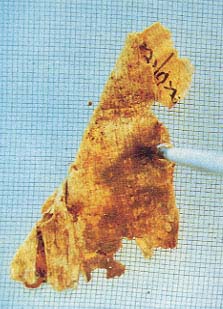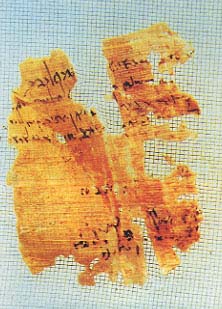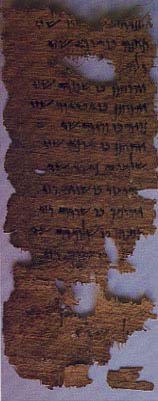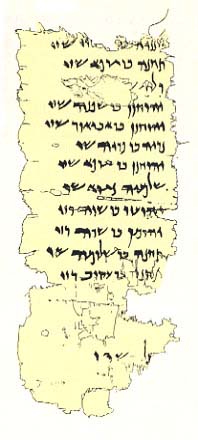How I Found a Fourth-Century B.C. Papyrus Scroll on My First Time Out!
044
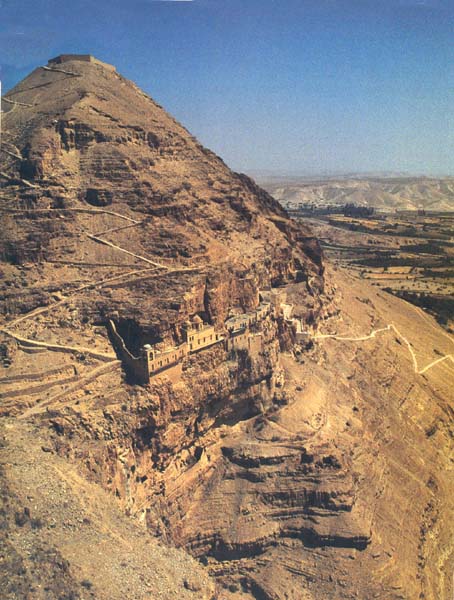
This is almost as much a personal story of luck and adventure as it is an archaeological story. It tells of my first dig—my own dig, that is—after graduating with a B.A. in archaeology from the Hebrew University of Jerusalem. My story will perhaps explain why, despite the scientific advances and the careful, methodical techniques that characterize most excavations today, there is still so much romance in, and attraction to, archaeology. The reason is simple: the mystery remains; the unexpected still happens. In short, one never knows.
It happened to me!
The name of the site is Ketef (KEH-tehf) Jericho—the shoulder of Jericho.
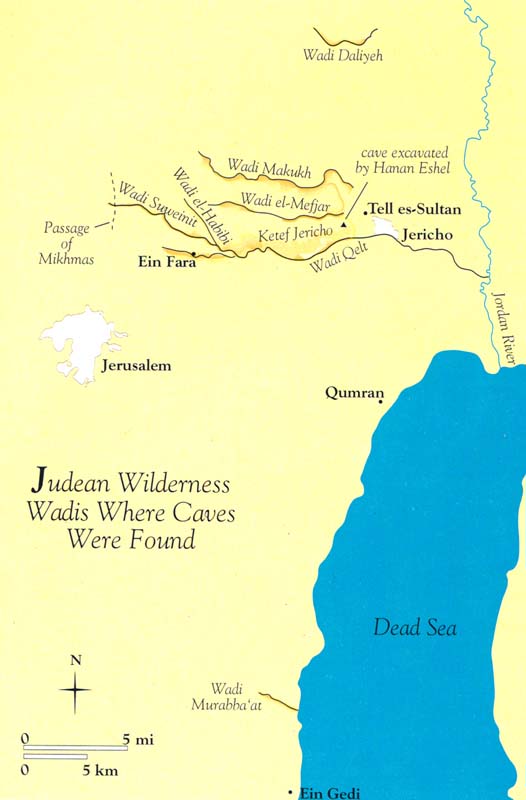
Ancient Jericho sits in the wide plain of the Jordan Valley, west of the river, six miles north of the Dead Sea. Less than a mile to the west of the tella of Jericho, which still encompasses most of the ancient city, a line of steep cliffs rises to a height of over 650 feet. This ridge provides a beautiful view of the lush tropical vegetation of Jericho fed by the perennial spring called ’Ein es-Sultan by the Arabs and known to westerners as Elisha’s Spring (from the Biblical story in 2 Kings 2:19–22).
The ridge that overlooks the ancient city is mentioned in the Bible in the description of the boundaries of the tribe of Benjamin. Benjamin’s northern boundary begins at the Jordan River and ascends to “Ketef Jericho”—the shoulder of Jericho, or the flank of Jericho, as it is sometimes translated (Joshua 18:12).
Just west of the ancient city, a deep gorge called Wadi el-Mefjar cuts through the cliffs of Ketef Jericho and drops sharply from the Judean hills on the west to the Jericho Plain on the east. On each side of this gorge, natural caves pierce the cliff.
These caves may be divided into two groups—north and south of the Wadi el-Mefjar. The northern group consists of about 25 caves. Above these caves is a monastery, to which we shall return. Over the centuries, the caves in the northern face were enlarged and adapted to the everyday needs of the monks who lived in them.
On the south face of Wadi el-Mefjar is a different group of caves. These have been left in their natural state. Oriented horizontally, parallel to the line of the ridge, they were created during the formation of the Syrian-African Rift of which the Jordan Valley is a part. 046After the Jordan Valley floor dropped to its present level (over 1,000 feet below sea level), these caves were carved out of the limestone cliff because the limestone easily dissolved in water. This karst formation, as geologists call it, is responsible for creating most of the large caves in the Judean Desert and eastern Samaria.
In 1979, Israel’s Nature Preservation Society established a Cave Research Division. A primary objective was to collect and compile data on all the caves of Israel. The society then launched a drive to enroll high school students from all over the country in a Cave-Lovers Youth Club, which would carry out this investigation. In December 1979, the Cave-Lovers Youth Club began a survey of the Ketef Jericho caves.
These caves are really quite accessible. Nearly all of them open on the same level onto a wide rock ledge. Only one of the caves on the south face of the wadi posed a problem, because the opening is about 15 feet above the rock ledge. Accordingly, it could be reached apparently only by using climbing equipment. While the majority of the kids were mapping the long, large accessible caves, the head of the Cave Research Division, Amos Frumkin, and a young colleague named Ezra, managed to climb up without equipment to the entrance to the higher cave. When they got inside, they found themselves in a small cave with two additional openings overlooking the valley even higher than the main opening they had used to enter the cave. Inside the cave, they discovered three rifles, a box of ammunition, some human skeletons and some pottery sherds. Amos and Ezra collected all these items and handed them over to the security forces for investigation. The guns and ammunition had been cached by terrorists. Pathological tests on the bones, however, showed that the guns and the skeletons were unrelated—the skeletons were several hundred years old. The pottery sherds were dated by the late Pesach Bar-Adon, one of the archaeological explorers of the Dead Sea caves, to the Chalcolithic (c. 4000–3200 B.C.) and Roman (second century A.D.) periods.
Five years passed before this cave was entered again—so far as anyone knows. In 1984, Amos again guided a group of cave enthusiasts to the site, but this time they came prepared. Using ropes, they easily climbed up into the cave. On this visit, Amos picked up a perfectly preserved wooden comb.

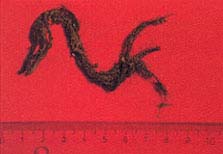
Amos showed me the comb he had recovered, and I immediately saw that it was identical to wooden combs that had been found in the early 1960s, when the Dead Sea caves were being systematically explored following the Bedouin discovery of the first Dead Sea Scrolls. Those combs had been dated to the Second Jewish Revolt against Rome, the so-called Bar-Kokhba revolt (132–135 A.D.).
I was only an undergraduate archaeology student at the time, but I decided that the cave where Amos found the comb would be worth excavating. It took me a year to make the arrangements. During this time, I was busy not only with the last year of my B.A. studies, but also with studying the literature—both ancient and modern—that would provide the necessary background for the dig.
My search of the literature naturally began with the Bible. It was probably to Ketef Jericho that the harlot Rahab directed the two Israelite spies that Joshua had sent to reconnoiter the region of Jericho before the Israelite attack on the city. You will recall that the king of Jericho heard that Joshua’s spies were staying at Rahab’s. When the king ordered the spies to be brought to him, Rahab told the king’s men that the two Israelites had been there earlier, but had already left. So the king’s men pursued them “in the direction of the Jordan” (Joshua 2:7). In fact, Rahab had hidden the spies. After dark, when the city gate was already closed, she let them down by ropes—“her house was at the outer side of the city wall and she lived in the actual wall” (Joshua 2:15)—and she told them to “make for the hills,” instead of returning directly to the Israelite camp at Shittim, east of the Jordan. Rahab told them to wait in the hills for three days (Joshua 2:16). Then it would be safe to leave. That is what they did. “They went straight to the hills and stayed there three days until their pursuers returned [unsuccessfully]” (Joshua 2:22). The Israelite spies probably spent the three days in the area of the caves of Ketef Jericho.
“Their pursuers had searched [for them] all along the way [to the Jordan] but found nothing; then the two men came down from the hills, and passed over [the Jordan] and came to Joshua the son of Nun, and they told him all that had happened to them. They said to Joshua, ‘The Lord has delivered the whole land into our power; in fact, all the inhabitants of the land are quaking before us’” (Joshua 2:22–24).
In gratitude for her help, the Israelites spared Rahab 047and her family when they conquered Jericho.
Over a thousand years later, Ketef Jericho was the scene of a grisly incident that still brings shivers to the spine. The incident occurred in the second century B.C., during the Hasmonean period, when the Jews had successfully revolted against their Syrian overlord Antiochus IV and had set up their own state. The revolt had been led by Judah Maccabee and his father Mattathias,b and by 135 B.C. the national leadership had passed to Judah’s brother, Simon. At that time a series of Hasmonean fortresses to protect the eastern frontier had been built along the edge of the Judean Desert; a fortress at Ketef Jericho was probably the first of these to be built. The commander of this fortress and of the Jericho area, one Ptolemy, son of Abubus, married Simon’s daughter and plotted to overthrow the Hasmonean House. Ptolemy invited Simon and his entourage to a banquet while they were on a visit to the Jericho area. During the banquet, Ptolemy treacherously murdered Simon. Simon’s son, John Hyrcanus, after proceeding to Jerusalem and winning the trust of the people there, pursued his brother-in-law Ptolemy, finally besieging him in his fortress near Ketef Jericho. Ptolemy, however, had kidnapped Simon’s wife (John’s mother) and Simon’s other two sons (John’s brothers). Each time John was about to take the fortress, Ptolemy brought John’s mother and his two brothers onto the rampart walls and tortured them before John’s eyes, threatening to throw them off the cliff unless John withdrew. In this way, the siege dragged on until Ptolemy succeeded in escaping to Rabbath Ammon. First, however, Ptolemy murdered John’s mother and brothers.1 We hear nothing more about Ptolemy, so we do not know what happened to him thereafter.
Remains of Ptolemy’s citadel, however, can still be seen on the ridge, with its siege fortifications still around it. It also boasts a sophisticated water system.
The next we hear of Ketef Jericho is in the fourth century A.D., when large numbers of Christian monks inhabited the caves in the cliff. A variety of features attracted them—the breathtaking view, the proximity to the springs of Jericho and Na’aran and the association of nearby Biblical Jericho and the holy Jordan River.
In addition, probably by the end of the Byzantine period (fifth to sixth centuries A.D.), Ketef Jericho became associated with the scene of Jesus’ temptation by the devil:
“Jesus, full of the Holy Spirit, returned from the Jordan, and was led by the Spirit for forty days in the wilderness, tempted by the Devil” (Luke 4:1–13; see also Matthew 4:1–11; Mark 1:12–13).
The first monk to inhabit these caves was the famous Haritun. Earlier he had founded a laura (a monastery consisting of monastic cells) at Ein Farah, in the Wadi Qelt, the major wadi that connects Jericho to Jerusalem. Eventually Haritun decided he wanted a more isolated and peaceful location. After wandering in the wilderness 048for a whole day, he found a cave in the Jericho region where he decided to seclude himself. Disciples soon joined him, and in this way he founded a laura at Douka on Ketef Jericho in 340 A.D.2
Later, Haritun moved west to an area between Tekoa and Bethlehem in the wadi that still bears his name, the Wadi Haritun. The monastery he founded on Ketef Jericho continued, however, and was later headed by another renowned monk, Alpidus, who came from Cappadocia in Asia Minor. According to a description by a contemporary source:
“Alpidus of Cappadocia lived in one of these caves. … He looked like the leader of a busy beehive. At that time there was peace and tranquility and the number of monks multiplied to the point that the site resembled a city.”3
After Alpidus’s death in the first half of the fifth century, the site entered a period of decline. When the monk Saba passed through here in 500 A.D., he found one solitary hermit. A few ascetic monks held out until the eighth century, and then it was abandoned completely. Nevertheless, in the Crusader period in the 11th century, Ketef Jericho was well known as the Mount of the Temptation.
Beginning in 1116, various travelers refer to the ridge as Mount Qarantal, from the French word quarante, referring to the 40 days of Jesus’ temptation. It is still called Qarantal today.
After the Moslem reconquest of Crusader Palestine, the site regained its old popularity as a refuge for hermit monks. In 1874, the Greek Orthodox Church bought the site of the monastery and began to restore it. These renovations were completed in 1895. The restored monastery may still be seen above the caves on the north face of the Wadi el-Mefjar. It stands on top of the more ancient remains, opposite the caves on the south face where I intended to dig.
As I was reviewing the historical literature concerning Ketef Jericho, I was also brushing up on cave excavation methodology, organizing my plans, arranging for equipment and pressing for an excavation permit.
Finally, it all came together. I was embarked on my first excavation! On April 15, 1986, when schools were out for the Passover holiday, I led the youth club of the Cave Research Division back to the Ketef Jericho caves. By this time, none of the 1979 participants was in the group. Most of the original group had already completed their military service and had jobs. The new team of high school students, however, was just as excited and enthusiastic.
We spent most of the first day setting up. To enter the cave, one of us rappelled by rope from the cliff above, down to the uppermost opening of the cave. From there the rappeller reached the lower, main entrance from inside the cave. He then lowered a 15-foot rope-ladder to the rest of us on the ledge below. This enabled us to climb up to the lower cave opening quite easily, especially because a small stone terrace and terrace wall had at one time been constructed outside this opening. When we later excavated this terrace, we found that the fill with which it was created contained material no later than the period of the Second Jewish Revolt against Rome (second century A.D.), so it must have been built after this—how much after we can’t be sure—probably by the monks.
Some of the enthusiasm of my team evaporated when we began to excavate and found the inside of the cave in chaotic condition and full of bat, pigeon and owl droppings. I was afraid that antiquities robbers had been here before us. After the first discovery of the Dead Sea Scrolls in 1947, the Ta’amireh Bedouin swarmed all over the Judean Desert looking into every cave for ancient treasures. Had they been here, too, and taken anything worth taking?
Our second day also proved disappointing. Wherever I expected to find clear stratigraphy, I found only a mess, evidence of Bedouin or terrorist disturbance. The 049artifacts we discovered were mostly empty cigarette boxes, old newspapers and the like. However, we also found some candles, attesting to the presence of Christian monks at some period. I later learned that monks had fled to the cave in 1948, when Arabs seized the Qarantal monastery during Israel’s War of Independence. This was further substantiated by our discovery on the third day, when we found a page from a modern prayer book printed in Greek that must have belonged to the monks who came here in 1948.
After exploring the inside of the cave as best we could with bad light, we began the process of filling our buckets with dirt and dung and lowering them by a pulley to the ridge below the cave. Here we strained the dirt and dung in the hope of catching any finds we had overlooked in our initial examination of the material inside the cave. Even this produced little of interest, however. Except for a few sherds, pieces of cloth, leather and rope, and some food remains—olive and date pits, nut peelings and grain seeds—nothing was found.
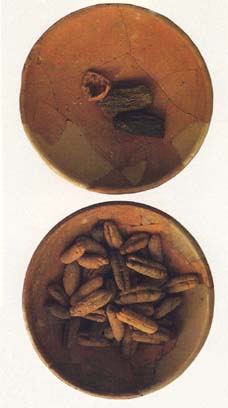
On the third day, a Mameluke coin from about 1340 A.D. turned up. Christian monks, harassed by Moslems, lived in the cave in the 14th century. According to a Christian pilgrim named Ludolf von Suchem,4 who visited Ketef Jericho in 1350, a Moslem ruler had closed off the path to the monastery; when this happened, the monks probably moved across the wadi into the caves on the south face. It may have been they who built the small terrace and terrace wall outside the cave. Soon thereafter, the path leading to the old laura was re-opened and the monks returned to the northern side of the wadi.
While we were examining this coin, on the ledge outside the cave, two boys began shouting that they had found some papyrus in the cave. I immediately climbed up to see it. The two boys had been digging near the cave opening. In the cave floor near the opening was a cleft about 6 inches wide. Someone in antiquity had filled it in so as not to trip when entering or leaving the cave. The two young volunteers, while filling their buckets with the debris from this cleft, discovered the papyrus in one of the handfuls of dirt. Fortunately, they noticed it and stopped work at once.
The papyrus was extremely brittle. If dirt had been thrown over it in the bucket, it would probably have crumbled. It was folded, with only part of the first line visible. On the spot, I could not identify the script. Since it was so fragile, I placed it in a cardboard box and very carefully lowered it to the ledge.
Soon other pieces of papyrus began to appear. Larger pieces were uncovered while excavating, and smaller bits turned up in the strainer. The large pieces were, 050unfortunately, all blank, but on some of the small pieces we could detect writing. All of the papyrus was found at what we call “point 10, ” not far from the spot where Amos Frumkin found the wooden comb.
The next day, the fourth day of our excavation, was uneventful. I examined the potsherds that had been collected from the various locations. Most of them were from the Roman period (first and second centuries A.D.). A few sherds, however, were Chalcolithic (dating to about 4000 B.C.).
On the fifth day, we dismantled our modest excavation. Itzik Magen, head of the Department of Antiquities Civil Administration in Judea and Samaria and a great help to us in the organization of our excavation, came to collect our finds. Unable to contain our excitement, we opened the cardboard carton with the initial bit of papyrus. Magen was the first to identify the writing as Aramaic, an identification later confirmed by Hebrew University Professor Joseph Naveh, one of the country’s leading epigraphers.
On April 28, 1986, Marina Rossovsky of the Israel Museum Laboratories unrolled the papyrus for us. Of course, it was photographed before, during and after it was unrolled. The fragment measures 4 inches by 4 inches and contains eight lines of writing. The right part of all the lines is missing.
Unfortunately, the contents of the scroll proved incomprehensible. The document was written in a very cursive handwriting. All that was clear was that four names had been written at the bottom, as signatures. Next to each name appeared the word kataba, which means “written by” or “signed by.” In this context, this indicates that these were signatures of witnesses to the document. The names of the witnesses provided proof that the document was legally binding.
The document was no doubt a commercial contract of some sort. Similar documents with signatures at the bottom accompanied by the word kataba had turned up in the late 1950s in the Wadi Murabba’at and in Nahal Hever. These were clearly dated to the time of the two Jewish revolts against Rome, one in the first century (66–73 A.D.) and the other in the second century (132–135 A.D.).
I spent several days trying to decipher the writing, but without success. Despite the fact that the papyrus was in relatively good condition, I could not understand it. It would take more study and expert collaboration.
I should add that in an inner room of the cave, we left undisturbed some human skeletal remains. I wanted no trouble from ultra-Orthodox religious groups.
I returned to our Ketef Jericho cave on three subsequent occasions; each time proved to be a new thrill. The first time was on May 14, 1986, when I went back with Professor Patricia Smith, Leora K. Horowitz and Tzipora Kahana, from the Laboratory of Physical Anthropology at Hebrew University and the Hadassah Hospital. They checked most of the skeletal remains at the site and counted the bones of at least 38 individuals—men, women and children—some from the same family. Some of the skeletons were then taken back to their laboratory. All those remains were returned, however, and buried in the cave by Rabbi Joel ben-Nun on July 25, 1986.
The next time I visited the cave was on June 11, 1986. Then it was with a TV crew. Israeli radio and newspapers had broadcast news of the discovery of our Aramaic papyrus, so our TV network wanted to make a report on the setting, the precise location, and to take some shots of us digging.
We returned to the cave for the last time on June 22 and June 23 to finish excavating the small terrace outside the cave entrance.
One of our most interesting finds was uncovered on our June 11 visit. Using a metal detector,5 we found 18 small bronze tacks just inside the main opening of the cave, along with a bronze ring and a steel needle. All this was easily datable to the Roman period.
The function of the bronze tacks, actually small nails, was at first a mystery. Sometime later, I was at the Israel Museum Laboratories watching the talented hands of Marina Rossovsky cleaning these bronze objects. Also watching the proceedings was Semadar Gabrieli, who was working on the publication of the leather objects discovered at Masada by the late Professor Yigael Yadin. When Semadar saw the small nails, she immediately commented that they were the kind that were used in the sandals of Roman soldiers. Indeed, these sandals were known as “nail-studded” sandals, caliga in Latin, that were basic equipment in the kit-bags of Roman 051soldiers. Yadin had discovered some sandals of this kind at Masada.

I naturally ran back to recheck the leather fragments we had found during our initial excavation of the cave. Sure enough, there was a leather sole and in it were four small nails still in place.
In the Mishnah,c Jews are forbidden to wear nail-studded sandals on the sabbath, probably because of their association with Roman soldiers. In that connection, a story is told in the Talmudd about Jews who fled to a cave during the Second Jewish Revolt against Rome, the Bar-Kokhba Revolt (132–135 A.D.). The soles of the Jewish sandals were marked in such a way that the footprint in the dirt would distinguish them from the nail-studded sandals of the pursuing Roman soldiers. However, one of the Jewish rebels inadvertently stepped out of their cave hideaway wearing a nail-studded sandal. Mistaking this sole print for that of a Roman soldier, the rebels inside the cave panicked and trampled each other in an effort to flee into the inner tunnels of the cave. More rebels were thereby killed, says the Talmud, than were killed by the Romans.6 Looking at the leather fragment and the collection of small nails we had found, the story took on a new life.
Yadin had found nail-studded sandals at Masada, the famous rebel stronghold during the First Jewish Revolt against Rome (66–73 A.D.). In his own exploration of Judean Desert caves, where rebels of the Second Jewish Revolt had hidden, Yadin found only sandals made without nails. Yadin argued that nail-studded sandals were used by Roman soldiers only in suppressing the First Jewish Revolt and that the story in the Talmud referred to an episode from an earlier period.7 However, the pottery we found, and especially a piece of a round Roman lamp that was unknown in the Roman world until the second century A.D., confirms the fact that rebels from the Second Jewish Revolt fled to this cave, thus corroborating the tradition in the story in the Talmud and its connection with the Second Jewish Revolt. The Ketef Jericho sandal is the first nail-studded sandal to have been found in a Judean Desert cave.
This material from the Second Jewish Revolt is important for another reason. It proves that the revolt spread to the Jericho area, and testifies to the participation of the Jews of Jericho in the revolt.
The last time we returned to the cave to excavate was on June 22–23. On the earlier trip with the TV crew—but after the TV crew had left at about noon—we uncovered, near the main opening, more small fragments of papyri on which letters could be detected. Accordingly, we decided to return for one last excavation in the hope of finding more papyri.
We had found all the papyrus fragments near the entrance to the cave. Indeed, the mouth of the cave was the only practical place to live. Here the air was clean and dust-free; here was the only spot where it was possible to cook without filling the cave with smoke and asphyxiating everyone inside. This suggested to me that the logical, next, and final, step would be to examine the small terrace just outside the cave mouth. If there were any hope of finding more papyrus fragments, it would be in the fill between the stone terrace wall and the cave opening. This is what we excavated in our final expedition.
Only two people could work at one time on this tiny terrace, so the other volunteers continued digging in the inner chamber. Within a half-hour, we found, on the terrace, papyri fragments with Greek writing, belonging to two separate documents. We also discovered a piece of a third document, written in Aramaic. Then—the pièce de résistance—a scroll rolled up like a cigarette suddenly appeared, lying on a potsherd from a Roman cooking pot. We couldn’t have been more excited.
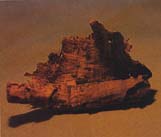
When I returned to Jerusalem with the rolled up papyrus, I found that Marina Rossovsky, who had unrolled the scroll we discovered in our first expedition to the cave, was on vacation. I waited impatiently for her return. Even before unrolling the “cigarette” scroll, I could see that it was inscribed on both sides. On the outer face the name “Shlomo bar … ” was legible.
Finally, Marina returned and on Friday and Sunday, June 27 and 29, 1986, the “cigarette” scroll and other 052newly discovered fragments were unrolled. I’ll return to the contents of the “cigarette” scroll in a moment.
The script on the Aramaic fragments found on the terrace resembles the script on the fragment we found in our first excavation in the cave. The script is a difficult-to-read cursive, characteristic of documents from the period of the Second Jewish Revolt. The fragments are the edge of a contract dealing with wheat.

The three Greek fragments we found (one with the first Aramaic document, and two on the terrace) are all financial documents.
The “cigarette” scroll, however, yielded its secrets more easily and proved to be our prize find. It had been rolled up seven turns. Unfurled, it is 7 inches long and 2.75 inches wide, and has writing on both sides. On side one are 13 lines; side two has two columns of seven lines each.
The writing is a formal Aramaic script, totally different from the Aramaic scripts of the Roman period. We took the document to two leading authorities from Hebrew University, Professor Naveh and Professor Jonas Greenfield. Both dated the “cigarette” scroll to about the middle or late fourth century B.C.! This makes it one of the oldest papyrus documents ever found in the Holy Land. Some idea of its age can be appreciated from the fact that the oldest of the so-called Dead Sea Scrolls, including fragments as well as more complete scrolls, is no older than about 250 B.C. Our scroll is 75 to 100 years older than the earliest of these Dead Sea Scrolls.
The only documents of comparable age from ancient Israel are the Wadi Daliyeh papyri discovered by the Ta’amireh Bedouin in 1962 in a cave about eight miles north of Jericho.e An American team led by the late Professor Paul Lapp thereafter carried out a thorough survey of the caves in this region,8 and Professor Frank M. Cross of Harvard University began to study the 053papyri. Professor Cross has dated the latest of the Wadi Daliyeh papyri to 335 B.C. Apparently the Wadi Daliyeh papyri belonged to people living in Samaria who fled to the Wadi Daliyeh caves to escape retribution for a revolt against Alexander the Great in 332 B.C. The fleeing Samaritans took these documents with them to the Wadi Daliyeh caves. Alexander’s soldiers pursued the rebels to the Wadi Daliyeh, located them in the cave in which they were hiding and lit a fire inside the cave opening, thereby using up the oxygen in the cave and suffocating the Samaritans. There their bones and documents lay until discovered by 20th-century Bedouin.
I met with Professor Cross in Jerusalem on August 17, 1986,9 when he came to attend the Congress of the International Organization for the Study of the Old Testament. He too confirmed that our “cigarette” scroll dated to the fourth century B.C., although his initial impression was that it postdated somewhat the Wadi Daliyeh papyri.
If the “cigarette” scroll postdates the Wadi Daliyeh papyri (335 B.C.), we have no idea why the document was brought to our cave or by whom. It is no less important, however, because until now we have had no documents in the formal Aramaic script that were written later than 335 B.C. (the date of the Wadi Daliyeh papyri) and before 250 B.C. (the date of the earliest of the Dead Sea Scrolls from Qumran). If the later date is correct for the Ketef Jericho scroll, then the gap in time for which we possess documents in the formal Aramaic script is narrowed considerably.
But I think there is also the possibility that the “cigarette” scroll is earlier than the Wadi Daliyeh papyri. If this is so, we can find a historical context for the document being in the Ketef Jericho cave. In 343 B.C., according to the third-century A.D. Christian historian Solinus,10 Jericho was destroyed by the Persian king Artaxerxes III in retaliation for its participation in a rebellion against Artaxerxes’s rule. From other sources, such as the first-century A.D. Jewish historian Josephus (in Contra Apion), we learn of Artaxerxes’s hostility toward Jews. Like the Samaritans who fled to the Wadi Daliyeh caves a few years later, the Jews of Jericho no doubt also fled—to the caves west of their homes—when Jericho was destroyed by Artaxerxes. Again like the Samaritans who fled to the Wadi Daliyeh caves, the Jews of Jericho took with them their important documents, at least one of which has survived as the “cigarette” scroll. Incidentally, the fourth-century B.C. destruction of Jericho was confirmed by Kathleen Kenyon’s excavations in the 1930s. The site was never resettled. When Jericho was rebuilt 200 years later, it was at a different site.
I suggested this theory that relates the “cigarette” scroll to Artaxerxes’s destruction of Jericho to Professor Cross. Although he inclines toward a later date for our “cigarette” scroll, he did not rule out the possibility that it was somehow connected with Artaxerxes’s destruction of Jericho in 343 B.C.
Unlike our Aramaic texts from the second century A.D., the formal Aramaic text of the “cigarette” scroll can be easily read. It consists of a list of Jewish names; next to each name is a number in shekels, revi’as and ma’ahs, all ancient coins. A shekel equals a Roman tetra-drachma. A revi’a equals one-quarter of a shekel. A ma’ah equals one-sixth of a revi’a.
At the bottom of the inside list on the scroll is the statement: “total 21 shekels.” The outside of the scroll has a similar list except that the sum is “total [ ] shekels. 8 shekels outstanding.” Apparently, the inside list is a list of people who borrowed money, while the outside list notes the repayments on the loans. The same names appear on both sides, but the sums on the outside are always less than on the inside. The numbers and the indication of so many shekels “outstanding” suggest that some borrowers had repaid their debt, at least partially, while others still owed on theirs.
Several of the names on the list—Avi’ur, Garpah and Shephanah—were previously unknown. Others are typical Jewish names from the Second Temple period—names like Yehoseph, Yeho’ezer, Yohanan, Akov and Dalui. Most of the names are given in the form “X son of Y,” but there are some exceptions. One man is identified as “Shlomiyah Nagra,” Shlomiyah the carpenter. Another is “Takhanah Khatlah.” “Khatlah” was apparently his nickname. This same nickname was discovered on a jar at Qumran, where it appears as “Yohanan Khatlah.”11 The meaning of this nickname, if that’s what it is, is a mystery.
In addition to the specific importance of all the finds in our cave at Ketef Jericho, we have shown that it is still possible to find written documents in the caves of the Judean Desert. It is our hope that the survey, exploration and excavation of these caves will continue and that new discoveries will continue to be unearthed.
This is almost as much a personal story of luck and adventure as it is an archaeological story. It tells of my first dig—my own dig, that is—after graduating with a B.A. in archaeology from the Hebrew University of Jerusalem. My story will perhaps explain why, despite the scientific advances and the careful, methodical techniques that characterize most excavations today, there is still so much romance in, and attraction to, archaeology. The reason is simple: the mystery remains; the unexpected still happens. In short, one never knows. It happened to me! The name of the site is Ketef (KEH-tehf) […]
You have already read your free article for this month. Please join the BAS Library or become an All Access member of BAS to gain full access to this article and so much more.
Already a library member? Log in here.
Institution user? Log in with your IP address or Username
Footnotes
The Mishnah is the collection of Jewish oral laws compiled by Rabbi Judah the Prince in about 200 A.D.
The Talmud (tahl-MOOD) is a collection of Jewish laws and teachings comprising the Mishnah and the Gemarah (a commentary on the Mishnah). There are two Talmuds. The Palestinian (or Jerusalem) Talmud was completed in the mid-fifth century; the Babylonian Talmud, completed in the mid-sixth century, became authoritative.
See Paul W. Lapp, “Bedouin Find Papyri Three Centuries Older Than the Dead Sea Scrolls,” BAR 04:01, and Frank M. Cross, “The Historical Importance of the Samaria Papyri,” BAR 04:01.
Endnotes
These events are described in 1 Maccabees 16:11–16, and in Flavius Josephus, The Jewish War 1.2:3–4 and Antiquities of the Jews 13.8:1. In Maccabees the citadel is named Dok, but Josephus calls it Dagon.
For the history of this monastery see Otto Meinardus, “Notes on the Laurae and Monasteries of Wilderness of Judaea,” III, Liber Annus 19 (1969), pp. 305–327.
Ludolph Von Suchem, Description of the Holy Land, (London: Palestine Pilgrims Text Society, 1895), p. 115. My thanks to Nitzan Price for helping identify the coin.
Yigael Yadin, The Finds from the Bar-Kokhba—Period in the Cave of Letters (Jerusalem: Bialik Institute/Israel Exploration Society, 1963), p. 166.
Paul W. Lapp and Nancy L. Lapp, ed., Discoveries in the Wadi Daliyeh, Annual of the American School of Oriental Research 41 (1974).
Also present was Haggai Mishgav, a student of Professor Naveh. He is collaborating with me in publishing the older text.
Solinus, 35:4 no. 449, in Menahem Stern, Greek and Latin Authors on Jews and Judaism, vol. 2 (Jerusalem: Israel Academy of Arts and Sciences, 1974), pp. 418–420.

